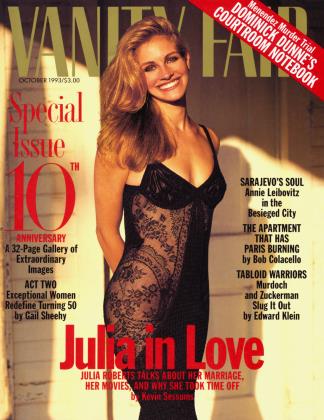Sign In to Your Account
Subscribers have complete access to the archive.
Sign In Not a Subscriber?Join NowA one-woman conglomerate with a multimedia pitch and multimillion-dollar revenues, Martha Stewart dispenses all the bourgeois wisdom that money can buy
October 1993 Christopher HitchensA one-woman conglomerate with a multimedia pitch and multimillion-dollar revenues, Martha Stewart dispenses all the bourgeois wisdom that money can buy
October 1993 Christopher Hitchens View Full Issue
View Full Issue






Subscribers have complete access to the archive.
Sign In Not a Subscriber?Join Now